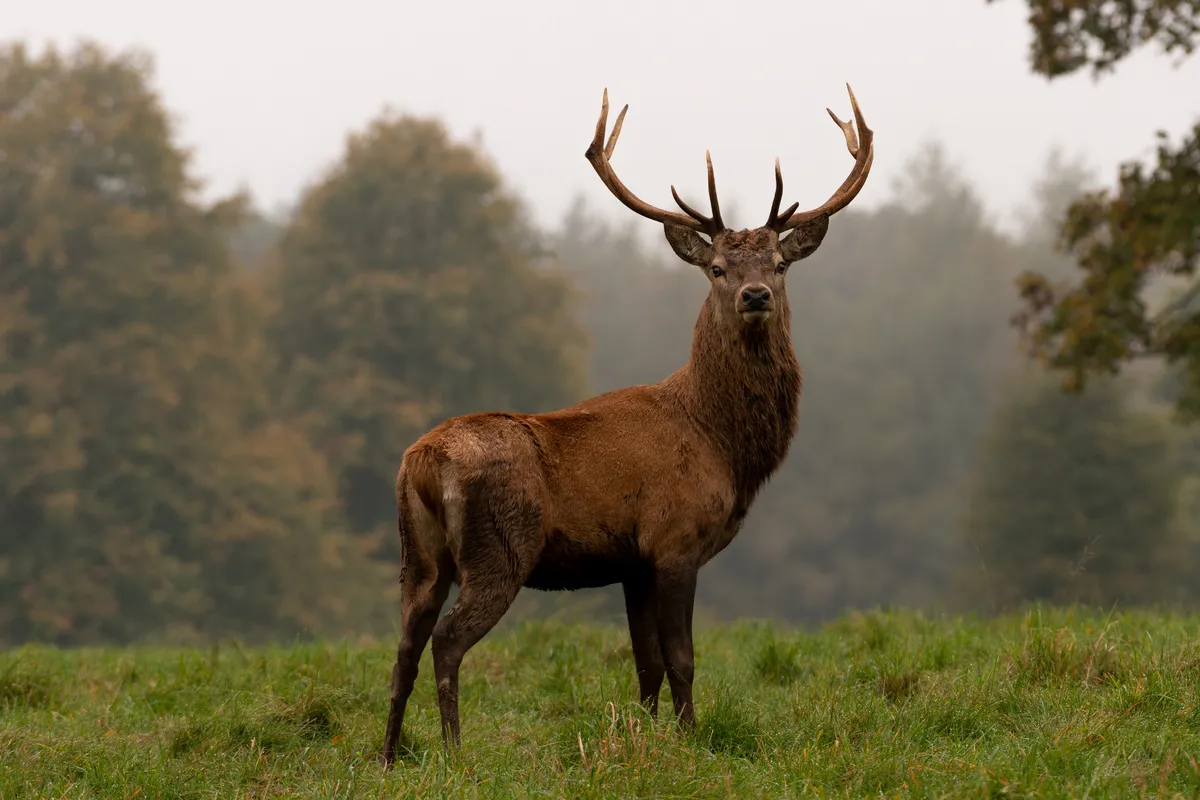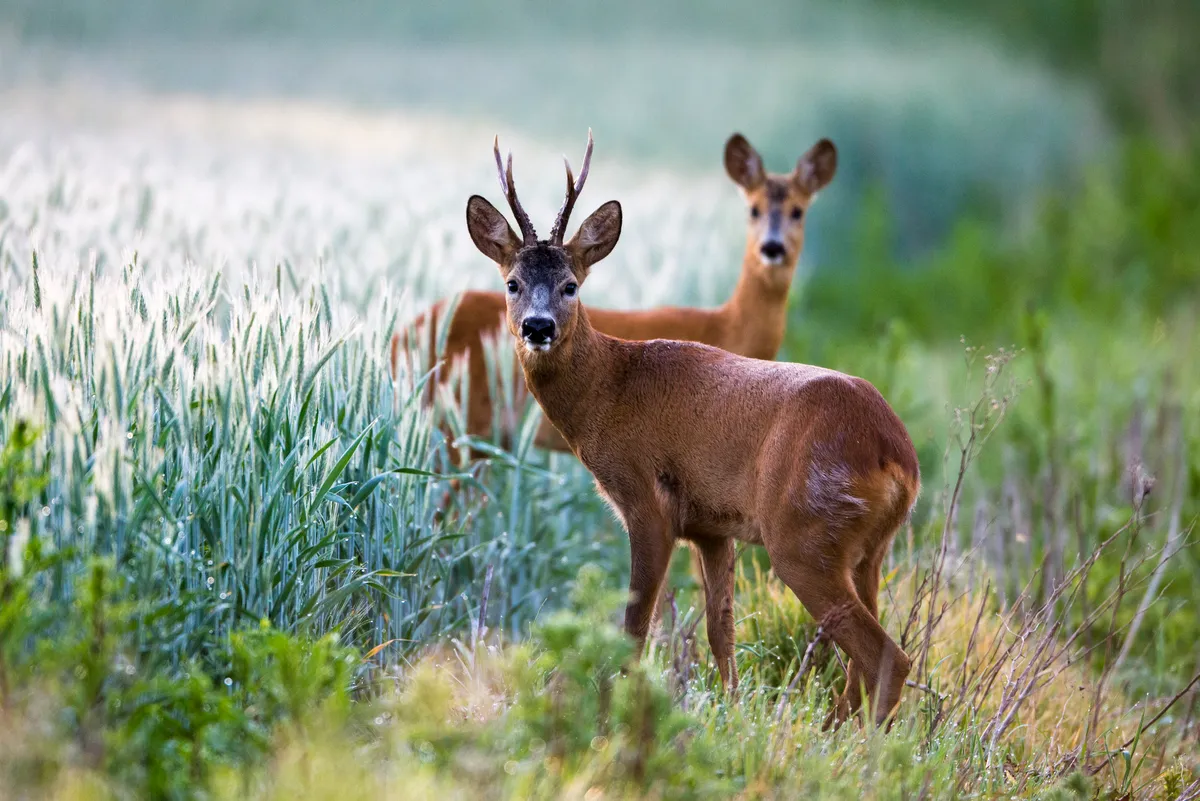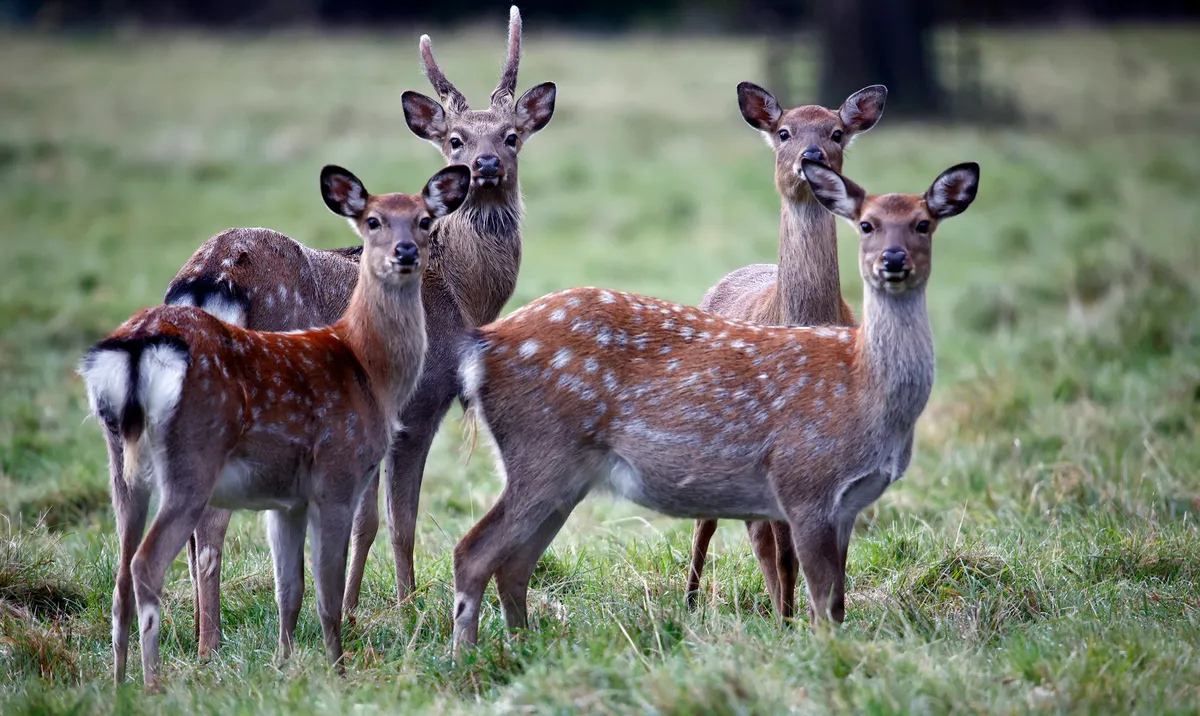There are six species of deer in the UK, from the minuscule muntjac deer to the majestic red, however just two are truly native to the UK - the roe and the red. The other four have made their way here across the water in various ways, from being brought over from East Asia in Victorian times to arriving with the Normans.
Do all UK deer have antlers?
Of the six wild deer species living in the UK countryside, only five grow antlers. The exception is the Chinese water deer. In fact, the species’ scientific name inermis means ‘defenceless’ or ‘unarmed’. But the male (buck) and female (doe) do have tusks, enlarged canine teeth protruding downwards from the upper jaw, with the males using them, like antlers, to display and fight.
Which deer species are found in the UK?
Red deer

UK born and bred, red deer are the UK's largest deer with a shoulder-height of up to 1.37m. Population hotspots include the Highlands and islands of Scotland, the Lake District, Exmoor, New Forest and Thetford Forest.
As well as their size they can be identified by their dark russet-brown fur and branched antlers
Roe deer

Roe deer are graceful with a white chin and rump patch, and a black nose. Their coat is redder in summer. The male’s antlers are short and erect. The muzzle is shorter than a red deer, while their stance is more upright and ears more pointed than a muntjac.
Their favoured habitat is open woodland, especially rides, clearings and areas bordering fields, but they will frequent farmland if thick hedgerows are present.
Unlike their red and fallow cousins, roe deer do not gather in large herds. They are usually seen alone or in small groups of up to half a dozen or so.
Sika deer

From eastern Asia, sika deer were first introduced to the British Isles in 1860 when a pair was presented to the Zoological Society of London. In the same year, four individuals were introduced to a park at Enniskerry in County Wicklow.
Sika soon became popular and were added to country estates and deer parks throughout the UK. But they proved hard to contain – some of the deer set free in 1896 on Brownsea Island in Poole Harbour swam to the Isle of Purbeck, where the species now thrives. Following further escapes sika have established themselves elsewhere in Dorset, in the New forest in Hampshire, and at scattered locations across Scotland and Ireland.
Red deer closely resemble sika, but the latter are smaller and in summer their coats have a scattering of white spots, which are lost during the winter.
Fallow deer
Unlike their red and roe cousins, fallow deer are not considered truly native to Britain even though they hav been here centuries. Their introduction, albeit shrouded in the mists of time, is usually attributed to the Normans, who brought them to England as quarry for la chasse, though there is some evidence that the Romans might have imported some deer here in the fifth century CE.
The males weigh between 46-80kg, and the females 35-52kg and they are between 1.4-1.8m long. Their preferred habitat is broadleaf woodland, conifer plantations, parks and fields.
Bucks have part-flattened, palmate antlers, and both sexes have a long tail with a black central stripe. Their usual coat colour is fawn with white spots, but can be darker and greyer in winter.
Chinese water deer

Chinese water deer are a little larger and – in winter – paler than the more familiar muntiac, and lack the white rumps of roe deer. They originate from the Far East, from where several individuals were introduced to Whipsnade Zoo in 1929 and 1930. A few escaped and began to breed in marshes, reedbeds and river valleys, spreading to Bedfordshire, Buckinghamshire and East Anglia, where the tall waterside vegetation of the fens and Norfolk Broads resembles their native habitat.
The deer prefer dense cover and browse a range of buds and leaves, but when this food is in short supply they will often forage in the open among root crops such as sugar beet. Search for these lovely animals at dawn and dusk.
Muntjac
Muntjacs are a small stocky type of deer, widespread in British woodlands. They are often overlooked because, being just 50cm high and no bigger than a medium-sized dog, they are hidden by tall vegetation for much of the summer.
They are particularly famed for their glands on their face, and long, v-shaped slits on their foreheads